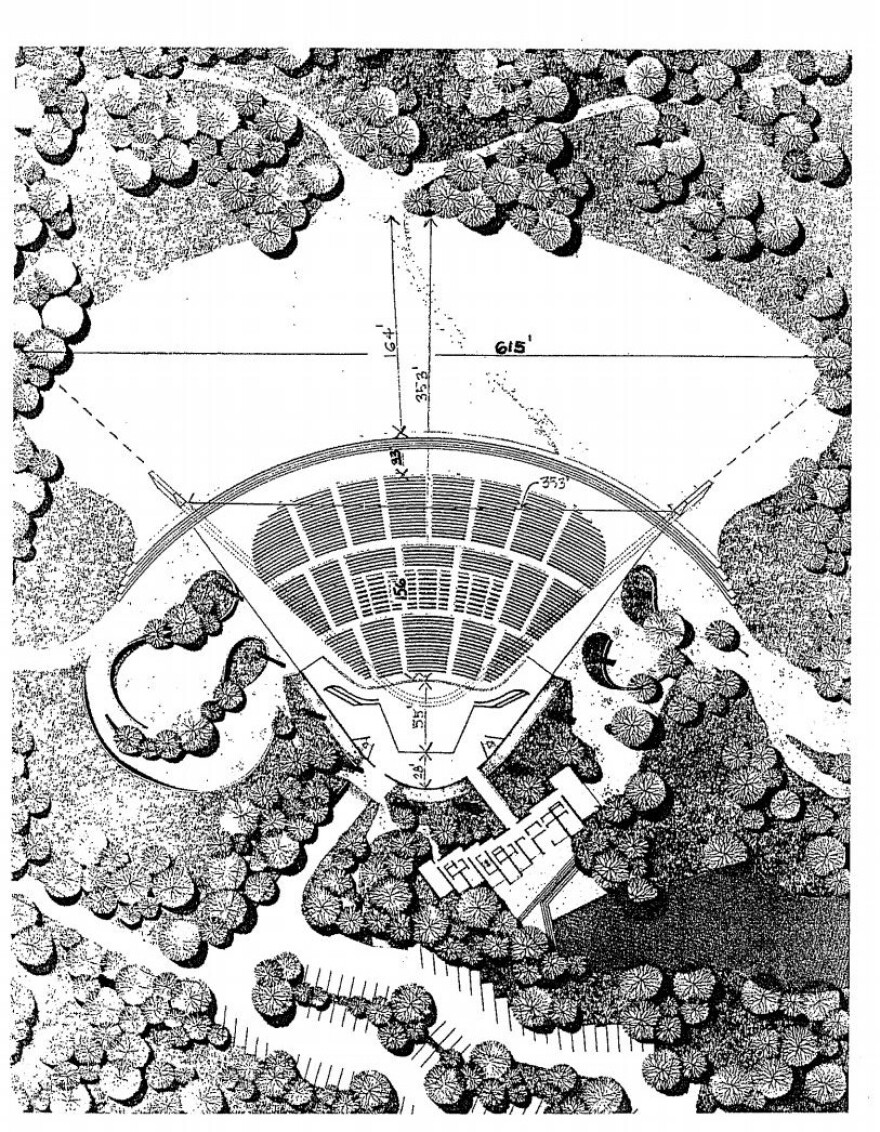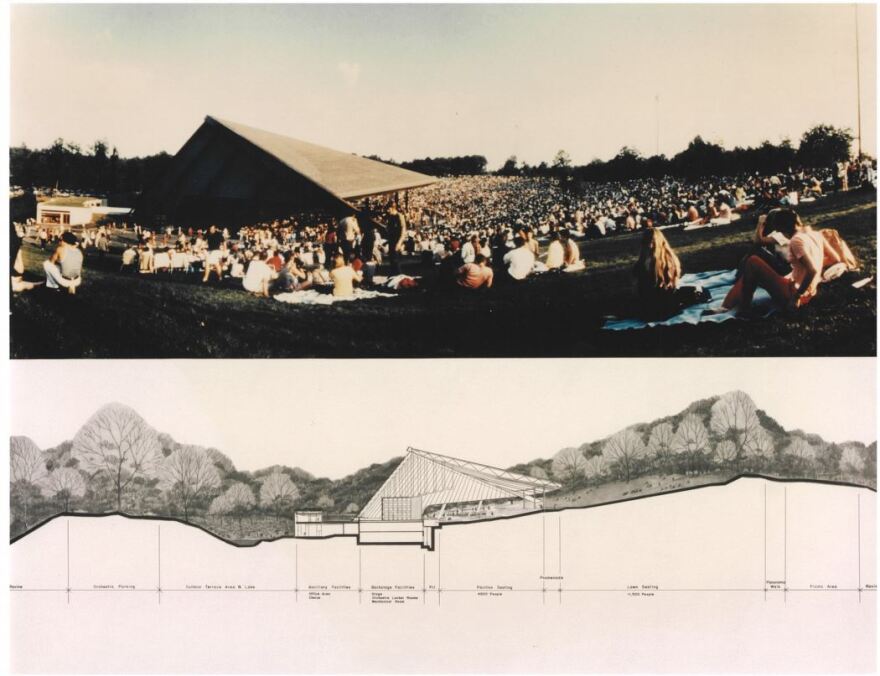Blossom Music Center, the summer home of the Cleveland Orchestra, is celebrating its 50th season this year. On this week’s State of the Arts, WKSU’s Mark Arehart sits down with Peter van Dijk, the architect who designed Blossom.
I meet Peter van Dijk at his home in Cleveland. Several walls are filled with sketches he’s made throughout a life that can really only be described as fascinating.
The son of Dutch parents, van Dijk was raised in Venezuela and New York state. He studied at MIT, was a Fulbright Scholar in Italy and got his start working for Eero Saarinen, the famed architect behind the Gateway Arch in St. Louis.
He's 89 and retired nearly 15 years ago as one of Northeast Ohio’s most celebrated architects.
"I’m pretty bored now that I’m retired. I stay busy on stuff, but wish I was doing the good stuff," he said as he combed through dozens of photos from his long career.
Becoming a Clevelander
He can trace his path to Cleveland back to a casual business meeting at Eero Seranin’s offices outside Detroit in the 1960s.
"A nice young fellow, a young architect, from Cleveland was working in Detroit. And I had met him and he had asked if I could show him the Saarinen office, which I did. I remember he stayed over at my apartment, a couple of young architect guys, you know, spaghetti and red wine and stuff," van Dijk said with a smile.

"At that time, Cleveland was awarded a federal building, the Celebreeze Federal Building, a real big project. And dammit they couldn’t decide who was going to design it."
He said several of the most famous architects of the day were contacted, but none signed on for the project.
"So the next shot was, ‘Let’s find somebody that works for one of these famous architects.’ And this young guy said to his boss, ‘I met a guy in Seranin’s office.’ So I was one of the ones that came down for interviews and they gave me the job."
Later in his career, van Dijk led the redesign of several theaters at Playhouse Square and updated many of downtown’s most recognizable buildings.

Building Blossom
But in the mid-60s he found himself at a spot in the middle of what is now Cuyahoga Valley National Park, in a natural bowl where the Cleveland Orchestra asked him to design an outdoor amphitheater second to none.
"The musicians didn’t have full-year contracts; New York and Boston, maybe Chicago, they had already found a way to employ their musicians full-time."
Before construction began in 1966, van Dijk and his team, which included structural engineer Miklos Peller and acoustician Christopher Jaffe, took a reconnaissance trip to the best known amphitheaters of the day.

"On that trip at night, we’d have a bunch of martinis sitting around at some motel and the main concepts (of Blossom) started to appear on martini-soaked napkins." van Dijk said with a chuckle.
"It was great. It was there that Jaffe explained what this was all about. He said, ‘What we need is volume where you can hear and see the direct sound, but where also the reverberating sound lingers up to three seconds.’ And that’s very hard to do outside."Nobody had ever done that before. That’s how I came up with this shape."
He points to “the big lid," the orchestra shell that encloses the musicians on stage. "(It) can help the sound from the orchestra bounce right into the audience."
Van Dijk wanted the outside structure to be resilient and ensure the acoustics within were always protected. That's why the structure used long-lasting materials such as concrete and what’s called weathering steel.
"(The steel) rusts and then the rust forms a scale, like a bark on a tree or a scab on a wound. And then it doesn’t rust anymore. The more it rusts the tighter it gets as a protection. It’s this brown color. That was the first use in Ohio of that material. And then the roof and the sides are slate. The point is that those three materials (concrete, weathering steel and slate) are forever. So the main cost of maintenance is mowing the lawns.”

As van Dijk shows me his original drawings and photos from the construction site, he says after all these years he still goes back every summer.
"We go five or six times, also, on the lawn. A bunch of good friends. We bring the fried chicken, the other guy brings fabulous wines. Somebody will bring the cheeses. We get there early enough. We have the perfect site right in the middle, and we just have a good time."
Editor's note: The third major contributor to Blossom's design was structural engineer, Miklos Peller.











